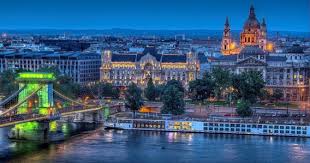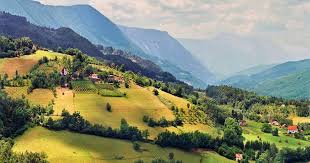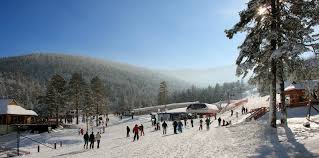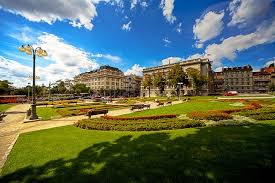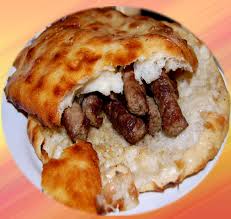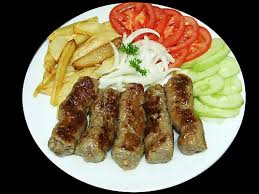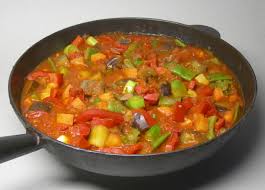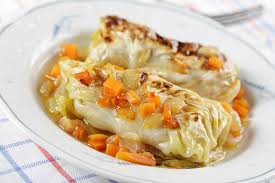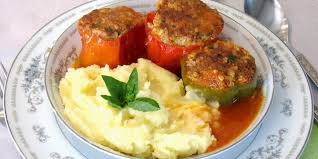Serbia (ˈsɜːrbiə/, Serbian: Србија / Srbija, IPA: [sř̩bija]), officially the Republic of Serbia (Serbian: Република Србија / Republika Srbija), is a sovereign state situated at the crossroads between Central and Southeast Europe, covering the southern part of the Pannonian Plain and the central Balkans. Serbia islandlocked and borders Hungary to the north; Romania and Bulgaria to the east; Macedonia to the south; and Croatia, Bosnia, and Montenegro to the west; it also claims a border with Albania through the disputed territory of Kosovo. The capital of Serbia, Belgrade, is one of the largest cities in Southeast Europe. Serbia numbers around 7 million residents.
Geography
Serbia is landlocked country located in the Balkans (a historical and geographical region of southeastern Europe) and in the Pannonian Plain (a region of central Europe). It shares borders with Bosnia-Herzegovina, Bulgaria, Croatia, Hungary, the Republic of Macedonia, Montenegro, Romania and Albania. It is landlocked, although access to theAdriatic is available through Montenegro, and the Danube River provides shipping access to inland Europe and the Black Sea.
Serbia covers a total of 88,361 km2 (34,116 sq mi), which places it 111th in the world. Its total border length amounts to 2,026 km (1,259 mi) (Albania 115 km (71 mi), Bosnia and Herzegovina 302 km (188 mi), Bulgaria 318 km (198 mi), Croatia 241 km (150 mi), Hungary 151 km (94 mi), Macedonia 62 km (39 mi), Montenegro 124 km (77 mi) and Romania 476 km (296 mi)).It has 6,167 registered settlements, 207 urban and 5960 others (rural)
Arable land covers 19,194 km2 (7,411 sq mi) (24.8%), and woods cover 19,499 km2 (7,529 sq mi) (25.2%) of the territory of Serbia.
Serbias terrain ranges from rich, fertile plains of the northern Vojvodina region, limestone ranges and basins in the east, and in the southeast ancient mountains and hills. The north is dominated by the Danube River. A tributary, the Morava River flows through the more mountainous southern regions.
In central parts of Serbia, the terrain consists chiefly of hills, low and medium-high mountains, interspersed with numerous rivers and creeks. The main communication and development line stretches southeast of Belgrade, towards Niš and Skopje (in Republic of Macedonia), along the valley of Great and South Morava river. Most major cities are located on or around that line, as well as the main railroad and highway. On the East of it, the terrain quickly rises to limestone ranges of Stara Planina and Serbian Carpathians, relatively sparsely populated. On the West, height of mountains slowly rises towards southwest, but they do not form real ridges. The highest mountains of that area are Zlatibor and Kopaonik.
Mountains cover the largest parts of the country. Four mountain systems meet in Serbia: Dinaric Alps in the west cover the greatest territory, and stretch from northwest to southeast. Carpathian Mountains and Balkan Mountains stretch in north-south direction in the eastern Serbia, west of the Morava valley. Ancient mountains along the South Morava belong to Rilo-Rhodope Mountain system.
Climate of Serbia is moderate continental with a diversity on local level, caused by geographic location, relief, terrain exposition, presence of river and lake systems, vegetation, urbanization etc. Proximity of the mountain ranges of Alps, Carpathians, Rhodopes, as well as Adriatic Sea and Pannonian plain affect the climate. Location of river ravines and plains in the northern area of the country enable occasional deep southward protrusion of polar air masses on winters, while hot Saharan air often intrudes over the Mediterranean Sea on summers.
Average annual air temperature for the period 1961-1990 for the area with the altitude of up to 300 m (980 ft) amounts to 11 °C (51.8 °F). The areas with the altitudes of 300 to 500 m (984 to 1,640 ft) have average annual temperature of around 10.5 °C (50.9 °F), and over 1,000 m (3,281 ft) of altitude around 6 °C (42.8 °F).
Population
Serbian Orthodox 84.6%,
Catholic 5%,
Muslim 3.1%,
Protestant 1%,
atheist 1.1%,
other 0.8%,
undeclared or unknown 4.5%
Transport
Railways
• Track length: 4,093 km
• Line length: 3,809 km
• Main lines length: 1,768 km
• Length of other lines I and II category; 2,041 km
• Electrified line length: 1,279 km [1]
Narrow gauge: Some narrow gauge railways are being reinstated for touristic purposes
Highways
• A1: Szeged, Hungary - Subotica - Novi Sad - Beška Bridge - Belgrade - Niš - Leskovac - Grdelica - Vranje - Preševo - Kumanovo, Republic of Macedonia.
• A3: Slavonski Brod, Croatia - Šid - Belgrade.
• A4: Niš - Niška Banja - Pirot - Dimitrovgrad - Sofia, Bulgaria.
• Total: 37,937 km (2002)
• Paved: 23,937 km (2002)
• Motorways: 688 km (2011)
• Unpaved: 13,950 km (2002)
Airports
• Belgrade Nikola Tesla - BEG
• Belgrade Batajnica - BJY
• Kraljevo-Lađevci Airport - LYKV
• Niš Constantine the Great Airport - INI
• U�ice-Ponikve - UZC
Greetings
|
English |
српски / srpski (Serbian) |
|
Добродошли (Dobrodošli!) |
|
|
Здраво (Zdravo) |
|
|
Hello (on phone) |
Молим (Molim) |
|
Како си? (Kako si?) - inf |
|
|
Reply to How are you? |
Добро сам, хвала. А ти? |
|
Дуго се нисмо видели (Dugo se nismo videli) |
|
|
Како се зовеш? (Kako se zoveš?) - inf |
|
|
Зовем се ... (Zovem se ...) |
|
|
Одакле си? (Odakle si?) - inf |
|
|
Ја сам из... (Ja sam iz ...) |
|
|
Драго ми је (Drago mi je) |
|
|
Добро јутро (Dobro jutro) |
|
|
Добар дан (Dobar dan) |
|
|
Добро вече (Dobro veče) |
|
|
Лаку ноћ (Laku noć) |
|
|
Довиђења (Doviđenja) - frm |
|
|
Срећно (Srećno) |
|
|
Пријатан дан желим (Prijatan dan �elim) |
|
|
Пријатно! (Prijatno!) |
|
|
Срећан пут (Srećan put!) |
|
|
Да (Da) |
|
|
Не (Ne) |
|
|
Можда (Mo�da) |
|
|
Не знам (Ne znam) |
|
|
Разумем (Razumem) |
|
|
Не разумем (Ne razumem) |
|
|
Можеш ли причати спорије? (Mo�eš li pričati sporije?) - inf |
|
|
Молим Вас можете ли ми то написати? |
|
|
Да ли говорите енглески? (Da li govorite engleski?) - frm |
|
|
Do you speak Serbian? |
Да ли говориш српски? (Da li govoriš srpski?) inf |
|
Yes, a little |
Да, (нешто) мало говорим српски |
|
Speak to me in Serbian |
Можеш разговарати са мном на српском |
|
How do you say ... in Serbian? |
Како се на српском ... каже? |
|
Извините! (Izvinite!) |
|
|
Колико ово кошта? (Koliko ovo košta?) |
|
|
Молим вас (Molim vas) - frm |
|
|
Хвала (Hvala) |
|
|
Reply to thank you |
Молим (Molim) |
|
Где је тоалет? Gde je toalet?) |
|
|
Овај господин ће све платити |
|
|
Ова дама ће све платити |
|
|
Желите ли да плешете са мном? |
|
|
Недостајеш ми (Nedostaješ mi) - inf |
|
|
Волим те (Volim te) |
|
|
Оздрави што пре! (Ozdravi što pre!) |
|
|
Остави ме на миру! (Ostavi me na miru!) |
|
|
У помоћ! (U pomoć!) |
|
|
Пожар! (Po�ar!) |
|
|
Стани! (Stani!) |
|
|
Позовите полицију! (Pozovite policiju!) |
|
|
Христос се роди (Hristos se rodi) - Christ is born |
|
|
Христос васкрсе (Hristos vaskrse) |
|
|
Срећан рођендан (Srećan rođendan) |
|
|
Знати један језик није довољно |
|
|
Мој ховеркрафт је пун јегуља |
Posters
Sights
Cuisine
Map
Itineraries
| Sr. No. | Itinerary Name | File |



